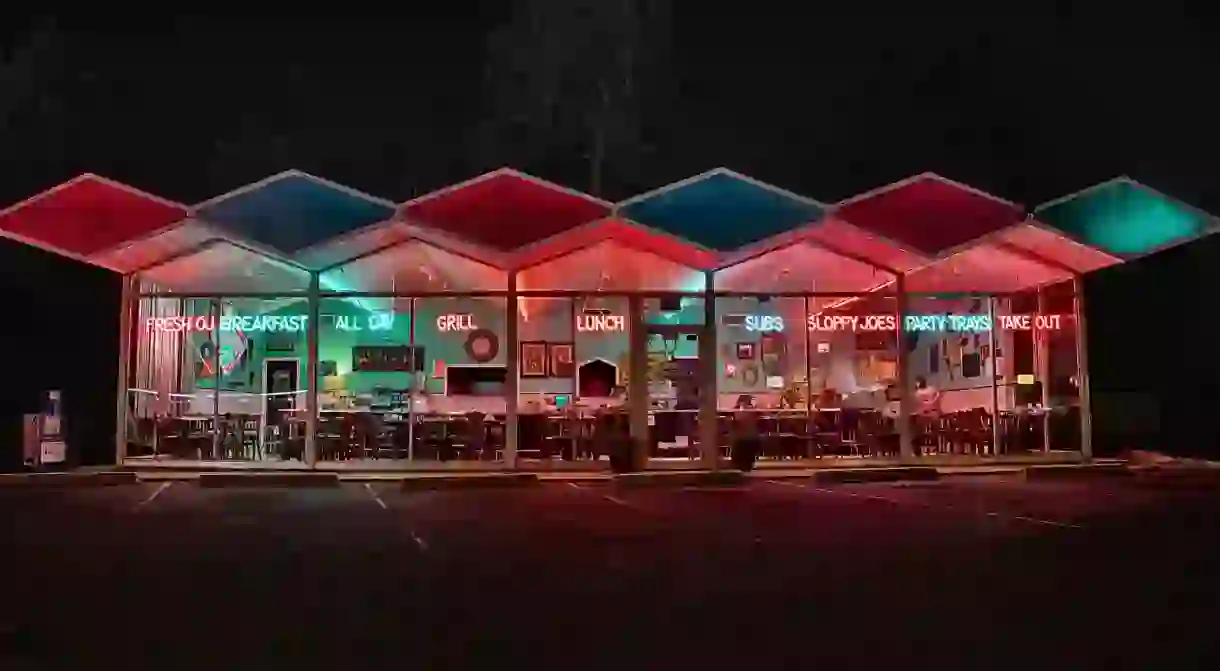What’s the Appeal Behind the All-American Diner?

The American diner is a particular breed of restaurant. The cuisine skews heavily towards grease, the décor towards neon. The diner has been immortalized in paintings by blue chip artists such as Edward Hopper and in movies as diverse as Pulp Fiction and Grease. What lies behind the American diner’s enduring appeal and makes it such a potent symbol of its country?
One element of the answer may be in the diner’s status as a fortifying stop for a weary traveler. America was created and expanded as a land of indefinite expansion. An entire strain of political thought, called the Turner Thesis, speculates that American democracy was derived from the idea of a perennial frontier to explore, with no old traditions or hierarchies established or necessary in new territories.

And the diner, often located just off major interstate highways, plays host to those who are traveling. A welcome sign, or an indicator of a rest earned, for those crossing the country on various ventures, the diner is an indication of hospitality on what may be an arduous trip.
But the diner’s meaning has not been constant throughout American history. It was initially a working-class concern, constructed primarily for blue-collar men working construction and other manual labor jobs. Diners were often made out of old boxcars, and the menu’s focus was on cheap and fast food.

In the 1920s, diners became fashionable for flappers to dine out in. Newly liberated from the Victorian mores that would have dictated they eat strictly with their family or their husbands, women availed themselves of the diner’s booths, which owners installed so that the women would not have to mix with men at the bar if they did not want to.
The diner retained an edgy quality as these flappers made it gender neutral, where women could expect company as risqué as their short haircuts and hemlines. “Certain people didn’t go into diners,” historian Richard Gutman told the Smithsonian, “because they were these places that somehow attracted a ‘lesser clientele.’”
In the postwar boom years, diners took on the reputation they have today—that of a homey, friendly, melting pot of people, some of whom are locals and some of whom are travelers passing through. The staples of the diner that were introduced in this era often remain, including the jukebox and the menu that seems resolutely stuck in the 1950s—instant coffee and bacon drowning in fat included.

But perhaps the most quintessentially American contradiction that the diner embodies is the American sense of individualism combined with its sense of community. Many people come into diners alone and are welcome to sit at the bar counter or in a booth without feeling strange for eating without a companion. And as David Lynch’s revised television series Twin Peaks teaches us, although we may enter a diner alone, we can meet anyone once we’re inside, and anything can happen.













